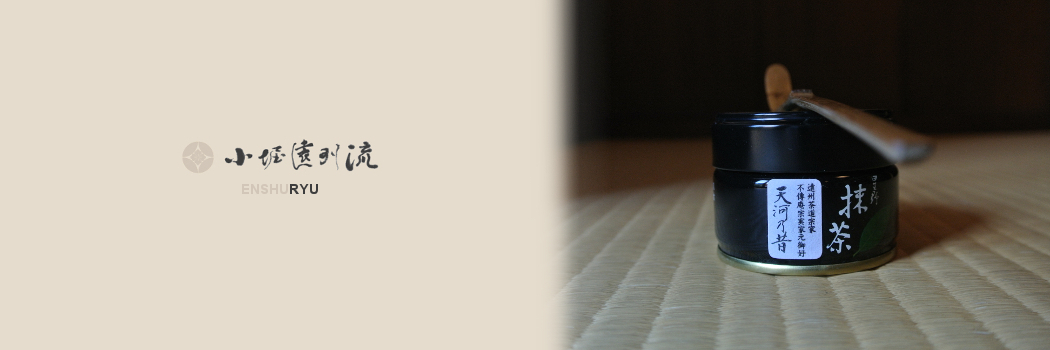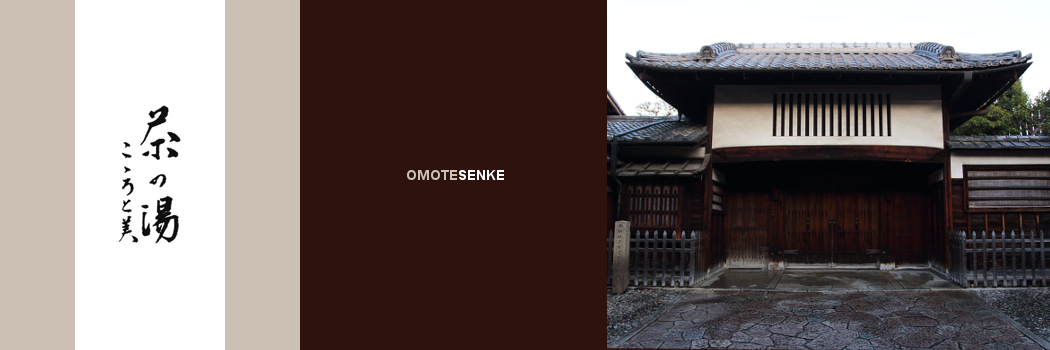CHADO







CHADO
Also known as chanoyu, commonly refers to the Japanese tea ceremony, a spiritual and aesthetic discipline for the understanding of how to "do", and how find "the way" of "chado" that means "the way of tea".
The tea ceremony is centered on the activity that the host spend together with the guest. The aim is to serve to him an unforgettable moment with a cup of tea in exchange of his gratitude responds, realizing both that shared time togheter can never be repeated, and that it is an opportunity of "once in a lifetime".
Urasenke has long been active in promoting worldwide understanding and appreciation of chado, so that the spirit of this 'way,' symbolized by its ideals of Harmony
Invented by SEN Rikyu, having been grown on Japanese soil, "the way of tea" is the quintessence of Japanese aesthetics and culture. The principles behind this art of living are harmony, respect, purity and tranquility. These are universal principles that, in a busy world like ours today, can guide us towards the realization of true peace.
The tea plant probably originated in the mountainous region of southern Asia, and from there was brought to China. At first it was used as a medicine, but by the Tang dynasty (618-907), it came to be drunk mainly for the enjoyment of its flavor.
The Japanese "tea route" dates back 500 years, and Genshitsu Sen was head of the Urasenke school. Having survived World War II, he sees tea as a powerful force for peace. In December 1943, he entered the Japanese naval air service. He had a box and some tea with him. Everyone knew that and in their uniforms they sometimes sat cross-legged and like the war-time samurai he was there, making tea for these warriors. Then, in April 1945, the Tokushima division of the air service was assigned to the kamikaze units. When it happened, a comrade said, "Ok, Sen, I guess this is my last cup of tea." As he drank, he said, "Sen, i wish to come in your teahouse and share a cup of tea with you again." That memory, after all these years, still remained vivid to Genshitsu Sen , and that was when he realized that they would never come back home.
In the end, with much luck Sen he was transferred. If it had not happened now it would be at the bottom of the sea, dead.
More than 70 years have passed since the end of the war and today, every single day, with shame in his heart, Sen puts his hands in prayer for all his friends he lost.
He hears their voices in the sky, telling him, "Hey, make sure we did not died in vain, do you understand?" And that's why today Master Sen is still very determined to tell the world that with a cup of tea and the Way of the Tea (Chado) we can still try to prevent war and bring peace. This is what he has always wanted to do.
Awarded the Order of Culture by the Emperor of Japan, Sen Soshitsu is just an example of inscription you will find in some Miwa XI & other Saka Korea Saemon XII available at ONIHAGI.COM.Currently, within the Urasenke organization, he is President of the Urasenke Tankokai Federation, and President of the Junior College of the Urasenke Way of Tea at the Tianjin University of Commerce.
Sadou, chadou or even cha-no-yu--as it is often called--is the beautiful, meditative, and serene Japanese ritual of ceremonial tea. It's also a life's work for those attempting to master it. But one can never master sadou because it is an on-going meditative practice and there is actually nothing to master except the mind itself.
With three main schools of practice, Urasenke is the most well-known. The other two main schools are Omotesenke and Mushakoujisenke. These three are known as the san-senke, and have lineage to the so-called founding father, Sen Rikyu. Many other schools exist but aren't known as "senke".
Created by a Zen Buddhist priest named Ikkyu, it was his student, Sen Rikyu (Sen-no-Soueki Rikyu Kouji) who perfected the tea ceremony by refining it into rustic simplicity: Meaning no-frills which could hinder the path to enlightenment. This concept has reverberated into modern architecture, seen in breathtaking homes with beautiful floors, walls, sliding doors, and interiors containing nothing but a vase of flowers. Even a photo of a Japanese interior exudes calmness, which works its magic on you from the pages of a magazine or coffee table book.
It is Sen Rikyu who is often regarded as the father of the tea ceremony, and not Ikkyu. Sen Rikyu is also said to be the father of "wabi-sabi", or imperfect beauty; and what many in the Western world consider as "old stuff", missing the point completely.
The tea ceremony was first used as a meditative practice. It wasn't about the tea at all. The ritual was about mindfulness, simplicity, and respect for the self. The main purpose of Zen, and of the tea ceremony, is to eliminate the unnecessary in life (and we could all use a little bit of that!). After all, the ritual consists of nothing more than "the simple act of boiling water, making tea and drinking it", to quote Sen Rikyu. As the greatest tea master of all time, he believed that if we all did a bit of navel gazing, we would realize that our human lives are filled with a plethora of ridiculous and superfluous thoughts, cluttering our minds and causing confusion. To get back to basics by boiling water, making tea, and sipping it we are helping rid ourselves of fantasy and illusion, enabling us to live a more harmonious and balanced life.
Westerners are curious about the tea ceremony because it is just so unlike anything we know or do. But mostly what attracts Westerners is the beauty, serenity, and tradition of the ritual and only a few do it to drink the tea. The ceremony incorporates special handmade instruments used in a choreographed ritual with theatrical precision that centers the mind. Exquisite hand-made bowls are adorned with the finest tea in Japan, whisked into a frothy three-sip gesture of respect.
NAHA, Okinawa - SEN Genshitsu says the guilt of surviving World War II was the impetus for his quest for world peace.
SEN is the traditional honorific title for Japan's grand tea master in the Urasenke Chado tradition. Now 82, he travels around the world to spread the spirit of the "Way of Tea," or "peacefulness through a bowl of tea."
He was on Okinawa recently to commemorate the 60th anniversary of the end of the Battle of Okinawa. At a solemn ceremony at Peace Prayer Park in Itoman, he dedicated tea to more than 200,000 people who died in the conflict. Then he sailed a few miles out in the sea to offer tea for fellow kamikaze pilots who perished in the waters.
It's a long way from piloting a flying bomb to the Way of Tea.
In 1943, SEN was conscripted into the Imperial navy. In May 1945, as the Imperial army was pushed to its final defensive positions on southern Okinawa, he was chosen for the kamikaze suicide corps.
He was trained in western Japan, then sent to the southern tip of mainland Japan, where hundreds of kamikaze pilots before him took off on their one-way missions to attack the U.S. fleet.
The name of SEN's plane was "White Chrysanthemum." He spent weeks awaiting an order that never came, watching many of his fellow pilots take off to carry out their missions.
"I lost 262 comrades," he said. "After the war ended, I blamed myself for being alive."
That feeling of indebtedness impelled him to spread the Way of Tea.
"I visited countries all over the world to spread the peace message that a bowl of tea conveys," he said. "Green tea symbolizes nature ... the world is condensed into tea in a small bowl.
"I firmly believe that to strive for lasting world peace, eliminating war ... is a sacred responsibility of those who survived the war."
In 1951, SEN went to Hawaii to attend the University of Hawaii and see the United States, his former enemy.
"I was very impressed to know how big-hearted and friendly American people were," he said. "I became determined to let people in the United States know, through sharing the spirit of the Way of Tea, that Japan is not a belligerent nation."
At first, SEN taught a small group in Hawaii. The group grew, spreading to the U.S. mainland, Europe and throughout the world. He has taught in more than 60 countries.
In 1964, he inherited the title of great master from his father. As grand master in the Urasenke Chado Tradition, he has met with more than 100 international religious and political leaders, including Pope John Paul II, U.N. General-Secretary Kofi Annan and President Bush. His activities continued even after he transferred the title to his son in 2002.
"Despite many barriers, such as customs and education, the nature of human beings is the same," SEN said. He said that the English phrase "after you" is a beautiful example of showing respect and care for others.
"It is the same spirit offered by the Way of Tea," he said.